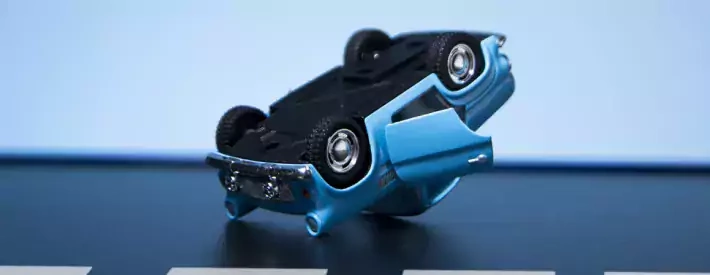Crash course

As the automotive sector slowly weans itself off combustion technology and transitions to an electrified future, the number of questions that need answering increases. But not every question is related to an EV’s range and where you can recharge the battery. The increasing number of EVs on the road also raises key questions for the repair and insurance sectors, which is why more research is being conducted in the area.
Launched at the end of 2022, the nattily titled Impact of BEV Adoption on Repair and Insurance Sectors research project looked at what happens in the collision repair and salvage processes, and how the involvement of an electric vehicle impacts insurance claims and their associated costs. Funded by Innovate UK, the project brought together Thatcham Research, insurer LV= and SYNETIQ, a specialist in vehicle salvage, dismantling and recycling, for five months of intense investigation that could transform the entire car insurance sector.
Big-picture thinking
The shift to electric has shown the industry to be extremely agile in adapting to meet the net zero challenge, with sales figures proving that more drivers are plugging into EVs. This makes it critical for those throughout the value chain to put everything in place to support the rapid transition. So which gaps in knowledge is the project looking to fill?
“There aren’t necessarily gaps in knowledge,” says Thatcham Research’s engineering manager Mark Fry. “It’s all about taking a step back and looking at the bigger picture, working with the insurance and repair sector to gain an overview of where the potential issues could occur.”
While EV accident repair is no different from internal combustion engine vehicles in many circumstances, at the centre of the issue is the EV battery pack. Conscious that batteries are expensive and vulnerable, OEMs rigorously protect them within crash structures, resulting in batteries rarely being affected by low-speed impacts. However, the challenge comes when the battery is involved, either directly as a result of a collision, or indirectly when the high-voltage system becomes associated with the repair.
“It may be obvious, but if you take the high-voltage system out, there’s very little difference in process from an ICE vehicle to an electrified vehicle,” says Fry. “One important thing to highlight is that it can affect every single part of the claim flow. It’s not just the repair side, it’s everything from the point that the consumer first makes an insurance claim.”
The research includes examining the difference in claim times between ICE vehicles and EVs, as well as additional expenses, such as the possibility of an EV’s battery requiring quarantining after being compromised in an incident. All those potential costs can add up in the event of a claim, so the industry needs to be prepared for them.
It’s vital that the industry comes together to ensure that customer expectations of owning, insuring and repairing an EV can be met, and that the experience can be better than with an ICE vehicle.
Recycle and repair
Thatcham Research is working in close partnership with LV= General Insurance, drawing on real-world claims data to inform project modelling. Chris Payne, head of networks and engineering at LV=, says: “As a motor insurer, we’re focusing on two trends at the moment: developing green methods of repair and supporting the wider adoption of electric cars. That’s why this project is so exciting and crucial. It’s about finding together as an industry the best way to repair EVs and their batteries, rather than writing them off. This will not only have a positive impact on claims costs, but will also feed a healthy second-hand EV market.”
Vehicle salvage, dismantling and recycling specialist SYNETIQ also played a key role in the project. As a business focused on recycling and re-using as much of a crash-damaged vehicle as possible, it will bring essential insight into the readiness of the market for financially and environmentally sustainable EVs post-accident, with a particular focus on their batteries.
“The purpose of our business is to maximise the financial and environmental return on vehicles,” says Tom Rumboll, UK Managing Director for IAA and CEO of SYNETIQ, “and we look forward to seeing how we can achieve this with EV batteries. We’re excited to lead and develop a way forward, and we look forward to sharing the results with the rest of the industry.”
The first step…
Once the project has identified where the claims workflow is different for EVs and revealed potential pain points, the resulting challenges will be quantified by projecting how the uptake of EVs will affect the transition to a fully electric car parc. The results will then be fed back to the industry so action can be taken.
“As part of the delivery of the project, we’re going to have a cross-industry roundtable discussion,” says Fry. “We will have vehicle manufacturers, insurers, independent repair networks and the Department for Transport at that event. As well as presenting our findings, we’ll discuss how we can overcome the challenges.”
This is just the beginning of a larger awareness campaign. Moving forward, further work will need to be done to uncover the challenges electrification brings and how the insurance and repair sectors can overcome them.
Fry is keen to point out that the research isn’t creating barriers to adoption, but finding solutions to new problems to help the industry and consumers make the shift to electrified vehicles more easily.
This is an edited extract from IMI's new MotorPro magazine, received free as part of IMI membership.




